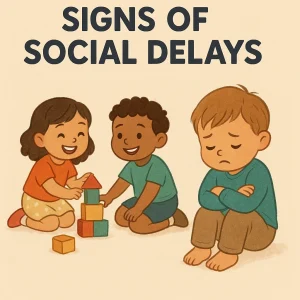Adult Lisping: Causes, Fixes & Tips for Clear Speech
By Rajini D
Last Updated: March 1, 2024
When we think of speech challenges, lisping in children often comes to mind. However, what many don’t realize is that lisping is not just a childhood issue. In adults, this speech impediment can persist or even develop later in life, affecting their communication and confidence. This concern, while common, often goes unnoticed or is not discussed as much as it should be. In our journey to understand and address adult lisping, it’s essential to recognize its presence and impact.
For those seeking clarity and solutions, understanding the roots and ramifications of adult lisping is key. Whether you’re directly affected or know someone who is, this exploration is not just about identifying the problem but also about finding effective ways to overcome it. In this comprehensive guide, we’ll dive into the causes of adult lisping, the challenges it poses, and how speech therapy can offer significant improvement. It’s a journey of discovery and empowerment tailored to help you or your loved ones find their voice in a world where clear communication is so crucial.
Understanding Adult Lisping
Lisping is not just a childhood quirk; it’s a speech impediment that can persist or emerge in adulthood. It’s characterized by difficulty in articulating certain consonant sounds, primarily /s/ and /z/. This difficulty often leads to these sounds being replaced or distorted, affecting the clarity of speech. In adults, lisping can manifest in professional and social settings, sometimes impacting communication and self-esteem.
A common misconception about adult lisping is that it’s always a carryover from childhood. While this can be true, it’s not the only scenario. Many adults develop a lisp later in life due to various factors. Understanding these causes is the first step toward effective management and treatment.
Gain insights into early speech development, which can influence adult lisping, by reading about Speech and Language Milestones for 5 to 6 Years.
Causes of Adult Lisping
Continued Childhood Speech Patterns
For some adults, a lisp is a continuation of speech patterns from childhood. These patterns might not have been corrected early on, leading them to persist into adulthood. This type of lisping is often deeply ingrained and requires dedicated effort to correct.
Also Read: Integrated Yoga Therapy for teaching Toothbrushing skills | Children with ASD
Neurological Conditions
Lisping in adults can also be attributed to neurological conditions. Strokes, traumatic brain injuries, or other neurological disorders can affect speech areas in the brain, leading to a lisp. This type is particularly challenging as it involves retraining the brain to correct speech patterns.
Physical or Structural Issues
Sometimes, the structure of the oral cavity or issues related to dental alignment can contribute to lisping. This could include factors like a cleft palate, tongue-tie, or misalignment of the teeth. In such cases, addressing the physical aspect is crucial for improving speech.
Stress and Anxiety Factors
Stress and anxiety can surprisingly trigger or exacerbate lisping. During high-stress situations or periods of anxiety, some individuals may find their speech patterns altering, leading to a temporary lisp. Understanding and managing these triggers is key to handling stress-induced lisping.
Common Causes and Solutions for Adult Lisping
| Cause | Description | Possible Solution |
|---|---|---|
| Continued Childhood Patterns | Lisp that has persisted from childhood due to unaddressed or unresolved speech development issues. | Speech therapy focuses on articulation and phonetics. |
| Neurological Conditions | Lisps are caused by brain injuries, strokes, or other neurological disorders affecting speech areas. | Tailored speech therapy, possibly including cognitive rehabilitation. |
| Physical or Structural Issues | Lisps result from physical anomalies like a cleft palate, tongue-tie, or dental misalignments. | Combination of speech therapy and medical or dental intervention, if necessary. |
| Stress and Anxiety | Lisping that is triggered or worsened by high-stress situations or anxiety. | Speech therapy, along with relaxation and stress-management techniques. |
| Muscle Weakness | Difficulty in speech due to weakened muscles in the tongue or mouth. | Speech therapy with specific focus on muscle strengthening exercises. |
Each of these causes presents its own set of challenges and requires a tailored approach for management and correction. Recognizing the specific cause behind a lisp is essential in charting an effective course of treatment and ultimately improving speech.
Challenges Faced by Adults with Lisp
Living with a lisp as an adult is not just about managing a speech pattern. It comes with a range of challenges that can touch every aspect of life, from social interactions to professional success and personal well-being.
Social and Emotional Impacts
Imagine being in a social gathering and feeling hesitant to speak up for fear of being misunderstood or even mocked. For many adults with a lisp, this is a frequent reality. Social situations can become a source of anxiety, leading to avoidance of conversations or public speaking. This can result in feelings of isolation and loneliness, as the joy of social interactions gets overshadowed by the fear of judgment.
Professional and Personal Communication Difficulties
In the professional world, clear and confident communication is key. Adults with a lisp might find themselves at a disadvantage in job interviews, presentations, or team meetings. The frustration of not being able to articulate thoughts clearly can hinder career progression and personal growth. On a personal level, these communication barriers can affect relationships, making it challenging to connect deeply with others.
The Psychological Aspect and Its Effect on Self-Esteem
Beyond the physical speech impediment, lisping carries psychological implications. It can significantly impact self-esteem and self-image. Adults may internalize their speech difficulties, leading to a harsh self-critique and a diminished sense of self-worth. This self-consciousness can permeate various life aspects, hindering one’s ability to enjoy and fully participate in everyday activities.
Also Read: Does Speech Therapy Work for Toddlers?
Role of Speech Therapy in Treating Adult Lisping
When it comes to addressing adult lisping, speech therapy stands out as a beacon of hope and a pathway to clearer communication. This form of therapy is not just about correcting speech patterns; it’s about empowering individuals to communicate confidently and effectively in their daily lives.
Introduction to Speech Therapy and Its Effectiveness
Speech therapy for adults is a specialized area focused on evaluating and treating speech disorders. It’s highly effective for those struggling with a lisp, offering strategies and techniques tailored to each individual’s needs. The goal is not just to correct the way certain sounds are pronounced but also to boost confidence in speaking situations.
Types of Speech Therapy Techniques Used for Lisping
- Articulation Therapy: This is a core technique used to address lisping. It involves exercises and practices to help individuals learn the correct placement of the tongue and mouth when making specific sounds. It’s not just about repetitive practice but understanding the mechanics of speech, which can be a game-changer for many adults.
- Muscle Strengthening and Coordination Exercises: Sometimes, a lisp is the result of weak or poorly coordinated speech muscles. In these cases, therapists use specific exercises to strengthen the muscles involved in speech. This could include activities like blowing bubbles or tongue-strengthening exercises, all designed to improve speech clarity.
- Relaxation and Breathing Techniques for Stress-Induced Lisping: For those whose lisping is exacerbated by stress or anxiety, speech therapists often incorporate relaxation and breathing techniques. These methods not only help in managing stress but also in gaining better control over speech during high-anxiety situations.
Practical Tips for Managing Adult Lisp
Dealing with a lisp in adulthood can be challenging, but there are practical ways to manage it effectively. These tips are designed to help improve speech clarity and boost confidence, especially in social situations. Remember, consistency and patience are key in this self-improvement journey.
1. Slow Down Your Speech
Speaking too quickly can sometimes exacerbate a lisp. By slowing down, you give yourself more time to focus on the pronunciation of troublesome sounds. This doesn’t mean speaking unnaturally slow but rather at a controlled pace that allows for clearer articulation.
2. Practice in a Comfortable Environment
Start practicing your speech in a comfortable and private setting, like your home. Once you feel more confident, gradually move to more public spaces. This step-by-step approach can significantly enhance your comfort level in various social scenarios.
3. Record and Listen to Your Speech
Recording your speech can be an eye-opener. Listen to the playback to identify specific areas where your lisp is most prominent. This method helps in understanding your speech pattern and monitoring your progress.
4. Use Tongue Twisters and Articulation Exercises
Tongue twisters and specific articulation exercises are great tools for improving speech clarity. They help in training your tongue and mouth muscles to articulate sounds more precisely. Start with simple phrases and gradually move to more complex sentences.
5. Practice Mindfulness and Stress-Relief Techniques
If your lisp is triggered or worsened by stress, incorporating mindfulness and relaxation techniques into your routine can be beneficial. Techniques like deep breathing or meditation can help manage anxiety, thereby improving speech control.
6. Seek Feedback from Trusted Friends or Family
Feedback from people you trust can be incredibly helpful. They can provide constructive criticism and support, helping you gauge how your speech is perceived by others.
7. Consistency is Key
Improving speech takes time and consistent practice. Dedicate a few minutes each day to practice your speech exercises. Consistent effort will lead to a gradual but noticeable improvement.
Integrating Speech Therapy Techniques into Everyday Life
Transforming speech therapy from a mere treatment into a part of your lifestyle is a vital step toward effectively managing a lisp. The beauty of speech therapy exercises is that they can be seamlessly integrated into your daily routine, making the practice more consistent and less of a chore. Let’s explore some practical ways to incorporate these techniques into your daily life.
Also Read: The Speech Chain: Understanding How We Communicate
1. Morning Routine Incorporation
Start your day with a positive speech mindset. While brushing your teeth or taking a shower, practice some simple articulation exercises. This could be repeating tricky sounds or words or even singing. These activities can serve as a warm-up for your speech muscles, setting a confident tone for the day.
2. Utilizing Commute Time
If you commute to work or run errands, use this time for practice. Listening to and repeating audio guides after speech therapy can be an effective way to utilize this time. Even narrating your actions or reading out traffic signs can be a helpful exercise.
3. Desk Exercises at Work
Incorporate subtle speech exercises at your desk. This could involve practicing breathing techniques or discreetly repeating certain sounds or phrases. These small practices can help maintain speech clarity, especially before meetings or presentations.
4. Evening Reflection and Practice
End your day by reflecting on your speech progress. Allocate a few minutes in the evening to practice more complex exercises or to record and assess your speech. This routine can help in tracking your improvement over time.
5. Making it a Family Activity
If you’re comfortable, involve your family in your practice. They can provide a supportive environment for you to exercise your speech skills in a relaxed setting. This can also turn into a fun family activity, making the practice enjoyable and less isolated.
6. Mindfulness and Speech
Integrate mindfulness into your speech practice. Being mindful of your speech can help reduce stress-induced lisping. Simple mindfulness exercises can be done anytime, helping you stay calm and focused.
7. Consistency Over Intensity
Remember, it’s not about intense, hours-long practice sessions; it’s about consistent, daily practice. Even a few minutes of focused exercise each day can lead to significant improvements over time.
Enhance your daily speech exercise routine with specific techniques discussed in our guide on Jaw Exercises.
Identifying the Right Time for Professional Intervention
Recognizing when to seek professional help for a lisp is a crucial step in the journey toward clearer communication. It’s important to be aware of certain signs that indicate the need for a speech therapist’s expertise. Let’s demystify this process and understand how Wellness Hub can be a valuable resource in connecting you with qualified speech therapists.
Recognizing the Signs
- Persistent Difficulty: If you’ve been practicing on your own but see little to no improvement over time, it might be time to consult a professional.
- Impact on Daily Life: When a lisp starts to affect your daily activities and professional or personal interactions, it’s a clear sign that seeking help could be beneficial.
- Increased Self-Consciousness: If you find yourself constantly worried or embarrassed about your speech to the point it affects your confidence, a speech therapist can provide not just corrective techniques but also emotional support.
- Feedback from Others: Sometimes, friends, family, or colleagues might notice difficulties in your speech that you might not be fully aware of. Taking their observations into consideration can be helpful.
Also Read: Why are teenagers difficult to handle? | Why are teenagers depressed?
Signs You Might Need Professional Speech Therapy
| Sign | Description | Recommended Action |
|---|---|---|
| Persistent Difficulty | Continued struggles with speech clarity or correct pronunciation despite self-practice. | Seek a consultation with a speech-language pathologist. |
| Impact on Daily Life | When lisping starts to significantly affect professional interactions, social engagement, or personal relationships. | Professional assessment to determine the extent of therapy needed. |
| Increased Self-Consciousness | Feeling overly embarrassed or anxious about speaking in public due to lisping. | Therapy to build confidence in speech alongside articulation techniques. |
| Feedback from Others | Receiving comments or concerns from friends, family, or colleagues about speech clarity. | A professional evaluation to understand the specific needs and therapy plan. |
| Avoidance of Speaking Situations | Intentionally avoiding situations where speaking is required due to embarrassment or fear related to lisping. | Comprehensive therapy focuses on both speech and psychological aspects. |
| Noticeable Effort in Speaking | Finding it hard to articulate words or having to exert extra effort to speak clearly. | Tailored speech therapy to improve articulation with less strain. |
Destigmatizing Speech Therapy
Seeking help for speech challenges should be viewed no differently than seeking medical help for a physical ailment. Speech therapy is a professional and scientific approach to solving speech-related issues. It’s about improvement and empowerment, not a sign of weakness. By understanding this, we can shift our perspective and embrace the support that speech therapy offers.
Consistency is key in speech therapy. Read about its importance in our piece on The Importance of Consistency in Online Speech Therapy.
Conclusion
As we reach the end of our exploration into adult lisping, it’s important to reflect on the key points we’ve covered. Understanding the causes of lisping, recognizing its impact on daily life, and acknowledging the effective role of speech therapy are crucial steps toward improvement. We’ve delved into practical strategies for managing a lisp and discussed how integrating speech therapy techniques into daily routines can make a significant difference. Most importantly, we’ve emphasized the importance of seeking professional help when needed and how Wellness Hub can be a resource in this journey.
Remember, having a lisp is not just a speech issue—it’s a part of your unique journey. The path toward clearer speech might have its challenges, but it’s a path filled with potential and growth. Every effort you make, every small step towards better articulation, is a testament to your resilience and commitment to self-improvement.
At Wellness Hub, we understand the complexities and nuances of speech impediments like lisping. We are committed to providing support and resources to help you navigate this journey. Whether you’re just starting to seek solutions or are well on your way to overcoming your speech challenges, remember that you’re not alone. With patience, practice, and the right support, improvement is not just a possibility but a very real outcome.
Frequently Asked Questions:
1. What are the common causes of lisping in adults?
Adult lisping can be caused by various factors, including continued childhood speech patterns, neurological conditions, physical or structural issues in the mouth, and stress or anxiety. Each of these factors can contribute to the persistence or development of a lisp in adulthood.
2. Can speech therapy effectively treat lisping in adults?
Yes, speech therapy is highly effective in treating lisping in adults. It involves specialized techniques like articulation therapy, muscle-strengthening exercises, and stress-relief strategies tailored to individual needs.
3. How can I incorporate speech therapy exercises into my daily routine?
Speech therapy exercises can be easily integrated into daily activities. This includes practicing articulation during morning routines, using commute time for speech exercises, and incorporating mindfulness and relaxation techniques to manage stress-induced lisping.
4. When should an adult consider seeking professional help for a lisp?
Professional help should be considered if the lisp persists despite self-practice, affects daily activities and communication, leads to increased self-consciousness, or if feedback from others suggests it’s impacting your speech clarity.
5. How does Wellness Hub assist individuals with lisping?
Wellness Hub offers resources and connections to qualified speech therapists who specialize in adult speech challenges. It provides a platform for finding the right support and guidance for managing and treating lisping effectively.
6. Are there any simple tips for managing a lisp at home?
Yes, simple tips include slowing down speech, practicing in a comfortable environment, recording and listening to your speech, and engaging in tongue twisters and articulation exercises. Consistency in practice is key for improvement.
7. Can a lisp affect an adult’s psychological well-being?
Absolutely. Adults with a lisp may experience social anxiety, reduced self-esteem, and communication difficulties in professional and personal settings. Addressing these psychological aspects is an important part of managing a lisp.
About the Author:
Rajini Darugupally
M.Sc., Speech-Language Pathologist (9+ years of experience)
Rajini is a passionate and dedicated Speech-Language Pathologist with over 9+ years of experience, specializing in both developmental speech and language disorders in children and rehabilitation in adults. Driven by a desire to empower each individual to find their voice, Rajini brings a wealth of experience and a warm, genuine approach to therapy.
Currently, at Wellness Hub, she thrives in a team environment that values innovation, compassion, and achieving results for their clients.
Connect with Rajini to learn more about how she can help you or your loved one find their voice.
Book your Free Consultation Today
Parent/Caregiver Info:
Client’s Details:
* Error Message









